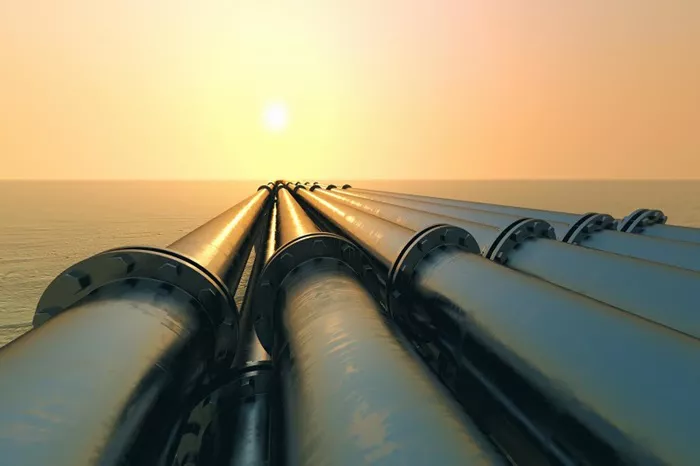Natural gas is one of the primary sources of energy in the modern world, powering homes, industries, and vehicles. Despite its cleaner-burning properties compared to other fossil fuels, natural gas is classified as a non-renewable resource. Understanding why natural gas is non-renewable involves exploring its formation, extraction, and consumption patterns.
Formation of Natural Gas
Geological Processes
Natural gas forms over millions of years through the decay of organic matter. This process occurs deep underground, where heat and pressure transform organic material into hydrocarbons.
Organic Material Deposition: Dead plants and animals settle in sedimentary basins.
Burial and Compaction: Layers of sediment cover the organic material, exerting pressure.
Thermal Maturation: Heat from the Earth’s interior breaks down the organic material into simpler hydrocarbons.
Migration and Trapping: Natural gas migrates through porous rock until trapped by non-permeable rock formations.
Timeframe of Formation
Natural gas takes millions of years to form, a process far exceeding human timeframes. This lengthy formation period is a key reason it is considered non-renewable.
Geological Time Scale: Natural gas deposits form over geological eras, such as the Carboniferous period.
Irreplaceability: Once extracted and consumed, natural gas cannot be replenished within a human lifetime.
Extraction of Natural Gas
Technological Processes
The extraction of natural gas involves advanced technologies that access deep underground reservoirs.
Drilling: Wells are drilled into gas-bearing formations.
Hydraulic Fracturing (Fracking): High-pressure fluid injections fracture rock formations to release gas.
Processing: Extracted gas is processed to remove impurities and transported via pipelines.
Environmental Impact
The extraction process has significant environmental impacts, contributing to its non-renewable classification.
Habitat Disruption: Drilling sites disrupt ecosystems and wildlife habitats.
Water Usage: Fracking uses large volumes of water, often sourced from local supplies.
Emissions: Methane leaks during extraction and transportation contribute to greenhouse gas emissions.
Consumption Patterns
Global Demand
Natural gas is a major energy source worldwide, with consumption rates that far exceed its formation rate.
Electricity Generation: Natural gas powers electricity plants, providing a significant portion of global electricity.
Industrial Use: Industries use natural gas for heating, chemical processes, and as a feedstock.
Residential and Commercial Use: Homes and businesses use natural gas for heating, cooking, and water heating.
Finite Resource
The finite nature of natural gas reserves means that continued consumption will eventually deplete available supplies.
Depleting Reserves: Known natural gas reserves are being depleted rapidly due to high demand.
Peak Gas Theory: The concept that natural gas production will reach a peak and then decline, mirroring the Hubbert peak theory for oil.
Comparison with Renewable Energy Sources
Renewable vs. Non-Renewable
Natural gas differs fundamentally from renewable energy sources in terms of sustainability and replenishment.
Replenishment Rate: Renewable resources, such as solar and wind, are replenished continuously by natural processes.
Environmental Impact: Renewable energy sources have lower environmental impacts compared to natural gas extraction and consumption.
Sustainability: Renewables provide a sustainable energy future, whereas natural gas relies on finite geological reserves.
Energy Transition
The transition from fossil fuels to renewable energy is critical for long-term sustainability.
Policy and Investment: Governments and businesses are investing in renewable energy infrastructure and technologies.
Technological Advancements: Innovations in renewable energy technologies are making them more efficient and cost-effective.
Environmental and Economic Benefits: Transitioning to renewables reduces environmental impacts and creates new economic opportunities.
See also: Will Natural Gas Be Phased Out? [Revealed]
Economic and Political Factors
Market Dynamics
Natural gas markets are influenced by economic and political factors that affect its non-renewable status.
Price Volatility: Natural gas prices are subject to fluctuations based on supply and demand dynamics.
Geopolitical Issues: Natural gas reserves are concentrated in specific regions, leading to geopolitical tensions and supply disruptions.
Energy Security: Dependence on finite natural gas reserves poses energy security risks for countries without significant domestic supplies.
Subsidies and Regulation
Government policies and subsidies play a role in the natural gas industry.
Subsidies: Some governments subsidize natural gas production and consumption, affecting market dynamics.
Regulation: Environmental regulations aim to mitigate the impacts of natural gas extraction and consumption.
Transition Policies: Policies promoting renewable energy adoption and reducing fossil fuel reliance are critical for a sustainable energy future.
Technological Innovations
Advancements in Extraction
Technological innovations have improved the efficiency of natural gas extraction but do not alter its non-renewable nature.
Enhanced Recovery Techniques: Techniques such as CO2 injection and horizontal drilling improve gas recovery rates.
Automation and AI: Advanced technologies optimize extraction processes and reduce operational costs.
Environmental Mitigation: Innovations aim to minimize the environmental impacts of extraction, such as reducing methane emissions.
Alternative Energy Solutions
Innovations in alternative energy sources are crucial for reducing reliance on non-renewable natural gas.
Renewable Energy Technologies: Solar, wind, hydro, and geothermal technologies offer sustainable energy solutions.
Energy Storage: Advances in energy storage, such as batteries and hydrogen, enhance the reliability of renewable energy.
Energy Efficiency: Improvements in energy efficiency reduce overall energy demand, lessening reliance on non-renewable resources.
Conclusion
Natural gas, despite its advantages, is a non-renewable resource due to its finite nature and the lengthy formation process. Understanding the reasons behind its non-renewable status underscores the importance of transitioning to renewable energy sources for a sustainable future. By investing in renewable technologies and supporting policy frameworks, we can reduce our reliance on non-renewable resources and ensure a more sustainable and environmentally friendly energy landscape.
Related topic:

